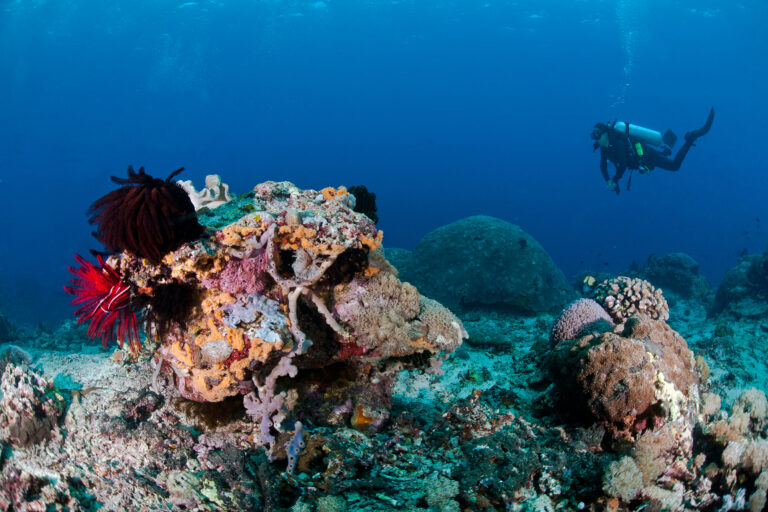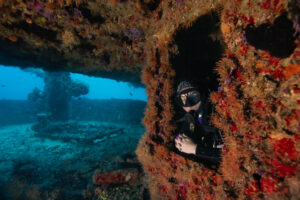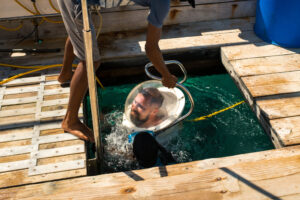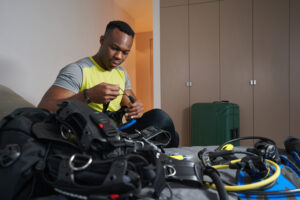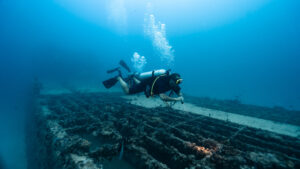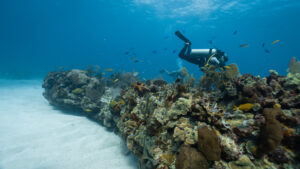What is an Underwater Breathing Apparatus?
Underwater Breathing Apparatuses (UBAs) are key components of scuba diving equipment, designed to supply a breathing gas that enables divers to breathe comfortably underwater. They are a crucial innovation that has allowed for the exploration of marine environments beyond the shallow depths reachable by breath-hold divers, transforming our understanding of the underwater world.
History and Development of UBAs
The concept of breathing underwater has intrigued humans for centuries. Early attempts to facilitate underwater exploration included rudimentary tools like hollow reeds and diving bells. However, the advent of the underwater breathing apparatus, colloquially known as scuba equipment, revolutionized the scope and safety of underwater ventures.
The first self-contained underwater breathing apparatus, or SCUBA, was invented in the early 20th century, but it was Jacques Cousteau and Emile Gagnan’s “Aqua-Lung” in 1943 that gained widespread acceptance. This open-circuit system expelled exhaled air into the water and changed diving forever by providing a reliable, relatively lightweight system for underwater exploration.
Types of Underwater Breathing Apparatuses
Underwater Breathing Apparatuses can be broadly categorized into two types: open-circuit and closed-circuit systems.
Open-Circuit Systems: The most common type of UBA, open-circuit systems, supply gas (typically a mixture of oxygen and nitrogen) from a pressurized scuba tank via a demand regulator. Upon inhalation, the regulator releases gas from the tank, and the exhaled gas is released into the water. The main advantages of open-circuit systems are their simplicity and reliability.
Closed-Circuit Systems: Also known as rebreathers, these systems recycle exhaled gas by removing carbon dioxide and adding oxygen to maintain a breathable mix. Rebreathers offer longer dive times and produce fewer bubbles, making them popular for scientific, military, and technical diving.
Components of UBAs
A typical underwater breathing apparatus is composed of several components:
Scuba Tank: This cylinder contains the breathing gas—usually air or a blend of oxygen, nitrogen, and helium—under high pressure.
Regulator: This device reduces the high pressure of the gas in the tank to a breathable pressure. It also controls the flow of gas, providing it to the diver only upon inhalation.
Buoyancy Control Device (BCD): This vest-like piece of equipment helps divers maintain neutral buoyancy underwater and positive buoyancy on the surface.
Submersible Pressure Gauge (SPG): This device indicates the amount of gas left in the scuba tank.
Breathing Apparatus: This usually consists of a mouthpiece, demand valve, and hoses connecting it to the regulator and tank.
Safety and Maintenance
Proper use and maintenance of UBAs are vital for diver safety. Regular checks and servicing by certified professionals ensure that the equipment functions optimally. Divers should always plan their dives considering their gas supply and regularly check their SPG during the dive.
Potential risks associated with UBAs include oxygen toxicity and decompression sickness (DCS), both of which relate to the pressure and gas mix used. Training courses educate divers on how to mitigate these risks.
The Future of UBAs
The development of underwater breathing apparatuses continues to evolve, with advancements focusing on improving safety, efficiency, and environmental impact. Innovations such as digitally controlled mixed-gas systems and lighter, more durable materials for tanks promise to further enhance the diving experience.
Key Takeaways
Underwater Breathing Apparatuses have opened the door to the underwater world, enabling divers to explore marine ecosystems, conduct scientific research, and engage in underwater photography and videography. They have also proved crucial in commercial applications, like underwater welding, and in rescue operations.
Moreover, UBAs have played a pivotal role in our understanding of human physiology under pressure, contributing to advances in fields like hyperbaric medicine. Their importance extends far beyond the scope of recreational diving.
As we look towards the future, UBAs will undoubtedly continue to evolve in tandem with developments in technology and materials science. The quest for longer, safer, and more environmentally friendly dives will drive innovation. For instance, we can anticipate improvements in rebreather technology that make them more user-friendly and affordable, making silent, bubble-free diving accessible to more divers.
In parallel, ongoing research into alternative breathing gases could further extend our underwater sojourns. Current research is exploring the potential of gases like xenon for deep dives. Meanwhile, the dream of an ‘artificial gill’ system that extracts oxygen directly from seawater, while technically challenging and not yet realised, remains a tantalizing possibility.
However, while equipment will continue to evolve, one thing remains constant: the need for proper training and respect for the marine environment. The underwater world is a place of wonder and beauty, but also of potential danger. A well-maintained, reliable underwater breathing apparatus is the key to unlocking this world, but it must always be used with care, respect, and a strong understanding of its operation and limitations.
As we continue to explore the depths of our oceans, the Underwater Breathing Apparatus will remain our lifeline, a testament to human ingenuity, and a symbol of our quest to push beyond our natural limits and explore the unknown. It is more than a tool; it is a passport to a world unseen by most, a world that, thanks to the humble UBA, we can visit, cherish, and strive to protect.

